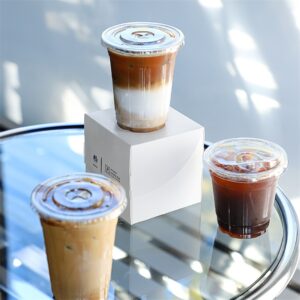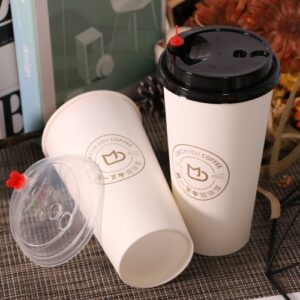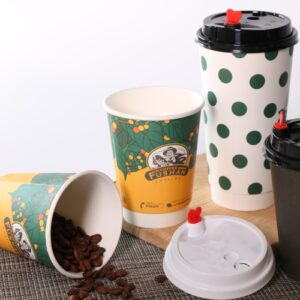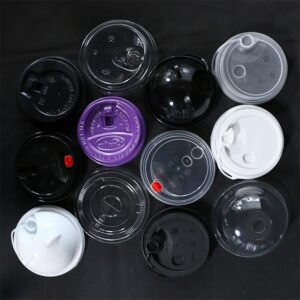Specifications, machinery and equipment and raw materials of disposable milk tea cups
At present, there are two main types of milk tea cups on the market: paper cups and PP cups. PP milk tea cups are divided into injection molding milk tea cups and blister milk tea cups. The following details the production materials and required machinery and equipment for each type.
First introduce the paper milk tea cup. The paper milk tea cup is a kind of paper container made of base paper (white cardboard) made of wood pulp, which is then machined and bonded. Some manufacturers apply polyethylene to the cardboard to increase the barrier and airtightness of the paper packaging. Because the melting point of polyethylene is much higher than that of wax, the new beverage paper cups coated with this material can be used to hold hot and cold drinks well, which solves the problem of affecting product quality due to the melting of coating materials. At the same time, the polyethylene coating is smoother than the original wax coating, improving the appearance of the paper cup.
The quality of disposable paper cups circulating in the market is uneven. In order to make the cup look whiter, some paper cup manufacturers have added fluorescent whitening agents to increase brightness. In order to achieve the water-proof effect of paper cups, a layer of polyethylene water-proof film will be coated on the inner wall during production, commonly known as lamination film. Polyethylene is a relatively common chemical substance in food processing, but if the selected materials are not good or the processing technology However, it may be oxidized to carbonyl compounds in the process of hot melting or applying polyethylene to paper cups, and carbonyl compounds are not easy to volatilize at room temperature, but they may volatilize when hot water is poured into paper cups, so people will smell Strange smell. Long-term intake of this organic compound must be harmful to the human body. What is even more worrying is that some inferior paper cups use recycled polyethylene, which will undergo cracking changes during reprocessing, produce many harmful compounds, and migrate to water more easily during use.
The equipment for producing paper cups mainly includes: slitter, die-cutting machine, (prepress equipment: plate making, printing) printing machine, paper cup forming machine.
Disposable PP milk tea cups are also called disposable plastic cups or injection cups. The raw material for production is polypropylene (referred to as PP), which is currently the most used type of milk tea. PP cups are the most commonly used specifications in milk tea shops. PP milk tea cups are suitable for most of the handle and quality requirements, and the temperature, hygiene and other requirements of milk tea can be met. There are two main processes for producing plastic milk tea cups: blister and injection molding.
The blister production process is to first pull polypropylene plastic particles into sheets, just like cloth, one by one, and then press the sheets into the shape of a cup with a molding machine. Blister is characterized by fast speed and high output. The disadvantage is that it is thin and easy to deform. Cutting and sealing requires separate equipment to seal again, requiring secondary processing, which increases the difficulty of hygiene. Therefore, milk tea shops currently use blister milk tea cups in the market. It is relatively small, mainly used by some relatively low-grade shops to save costs.
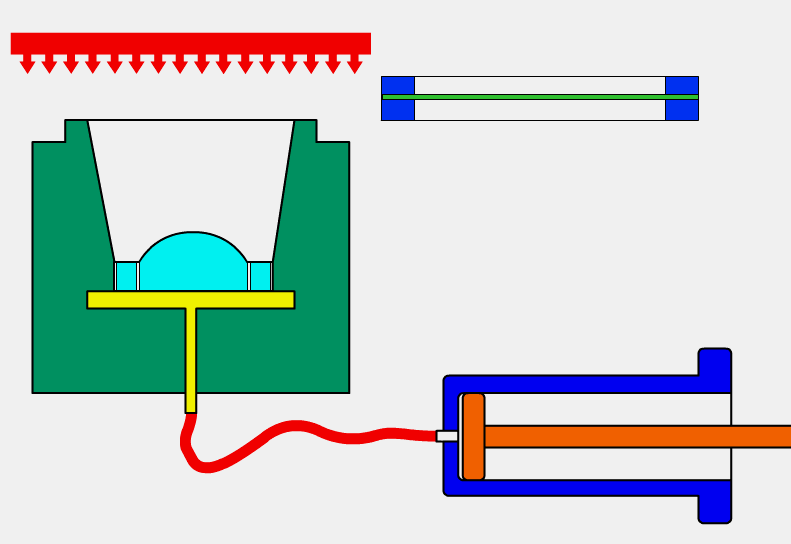
The injection molding milk tea cup is produced by an injection molding machine. The production principle is that the raw material polypropylene particles are melted in the screw of the injection molding machine at high temperature, and then injected into the film cavity. Once the molten plastic enters the mold, it is cooled and molded into a certain shape according to the cavity. The resulting shape is often the final product, a one-shot injection molding. No other processing is required prior to use or as a final product. Many details, such as bosses, ribs, threads, can be formed in a single injection molding operation. An injection molding machine has two basic components: the injection unit and the clamping unit for melting and feeding the plastic into the mold.
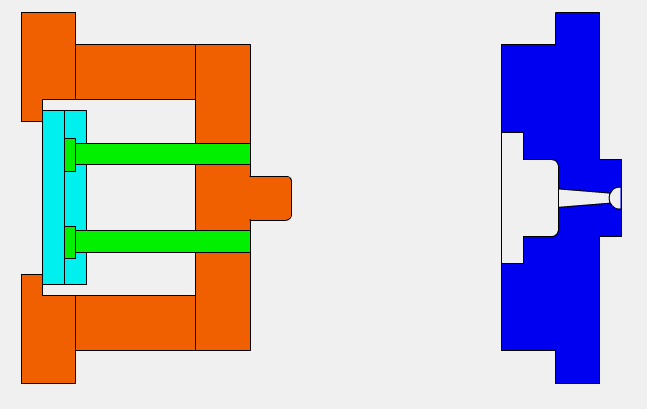
The function of the clamping device is to:
- Make the mold close under the condition of bearing the injection pressure;
- Take the product out of the injection device
The plastic is melted before it is injected into the mold, and then the melt is injected into the mold under controlled pressure and speed. Two designs of injection units are currently used: screw preplasticizers or two-stage units, and reciprocating screws. Screw preplasticizers use a preplasticizing screw (first stage) to inject molten plastic into the injection rod (second stage). The advantages of the screw preplasticizer are constant melt mass, high pressure and high speed, and precise injection volume control (using mechanical thrust devices at both ends of the piston stroke). These advantages are required for transparent, thin-walled articles and high production rates. Disadvantages include non-uniform residence time (leading to material degradation). The most commonly used reciprocating screw injection device does not need a plunger to melt and inject the plastic.
Injection-molded milk tea cup capacity, the current milk tea cup capacity on the market mainly includes: 500mL, 700mL, 900mL, 1100mL. The caliber of milk tea cups is 90mm, collectively referred to as 90 caliber lids. The size of the capacity is only different in height, and the lid of the injection-molded milk tea cup is common to all types of milk tea cups, which greatly reduces the cost of the manufacturer. The thickness of the injection-molded milk tea cup is generally 50mm, which requires a high-speed injection molding machine to produce, which cannot be produced by ordinary injection molding machines, because the wall thickness is thin, and ordinary machines cannot meet the requirements.
At present, the models of high-speed milk tea cup machines produced in the market mainly include: 320T, 350T, and 380T. The 320T high-speed machine can produce six 500ML capacity milk tea cups, and the production cycle of each mold is about 7.3 seconds. The 350T high-speed machine produces six milk tea cups with a capacity of 700ML, and the production cycle of each mold is about 7.6 seconds. The 380T high-speed machine produces six milk tea cups with a capacity of 900ML, and the production cycle of each mold is about 8 seconds.


